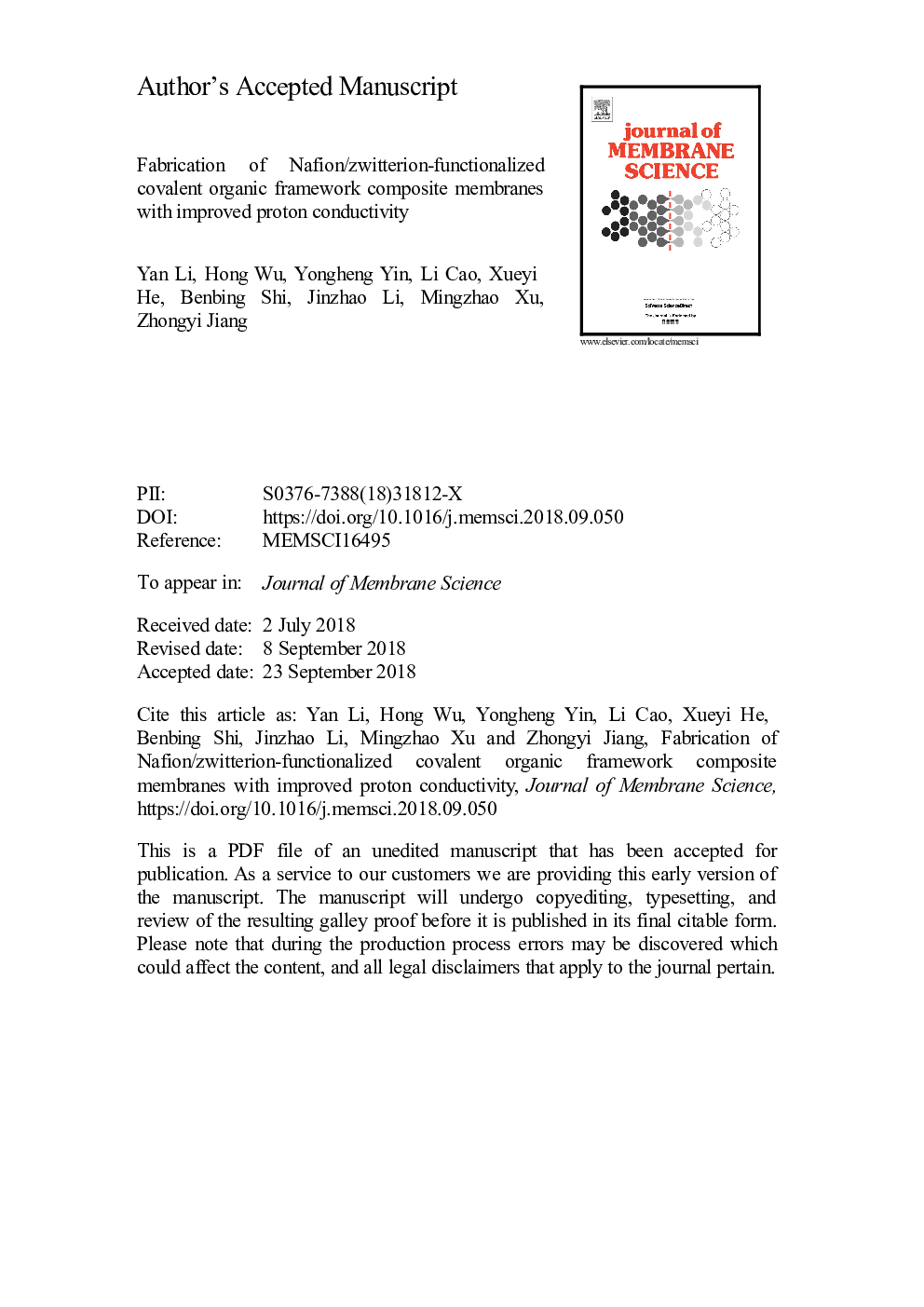| Article ID | Journal | Published Year | Pages | File Type |
|---|---|---|---|---|
| 11020821 | Journal of Membrane Science | 2018 | 28 Pages |
Abstract
The construction of efficient proton transport channels in ion-conductive membranes is crucial to proton exchange membrane fuel cells (PEMFCs). Herein, zwitterion-functionalized covalent organic framework (Z-COF) with both ammonium groups and sulfonic acid groups was synthesized and blended with Nafion to prepare Nafion/Z-COF composite proton exchange membranes. The polymer-like feature of the Z-COF imparted favorable interactions between Z-COF and Nafion, and thus promoted the dispersion of Z-COF and the reorganization of ion clusters. The incorporation of Z-COF enhanced water retention property and the sulfonic groups on Z-COF provided additional proton-transport sites within the membranes. As a result, the low-energy-barrier paths for proton transport were created. The composite membranes with 10â¯wt% of Z-COF exhibited the highest proton conductivity of 0.22â¯Sâ¯cmâ1 at 80â¯Â°C and 100% RH, which was 57.1% higher than that of recast Nafion membrane. The enhanced proton conductivity also afforded the composite membrane a 45.7% increase in maximum power density of single fuel cell at 80â¯Â°C and 50% RH. The effects of Z-COF loading on membrane morphology, polymer chain mobility, thermal stability, water uptake and dimensional stability were also investigated.
Related Topics
Physical Sciences and Engineering
Chemical Engineering
Filtration and Separation
Authors
Yan Li, Hong Wu, Yongheng Yin, Li Cao, Xueyi He, Benbing Shi, Jinzhao Li, Mingzhao Xu, Zhongyi Jiang,
